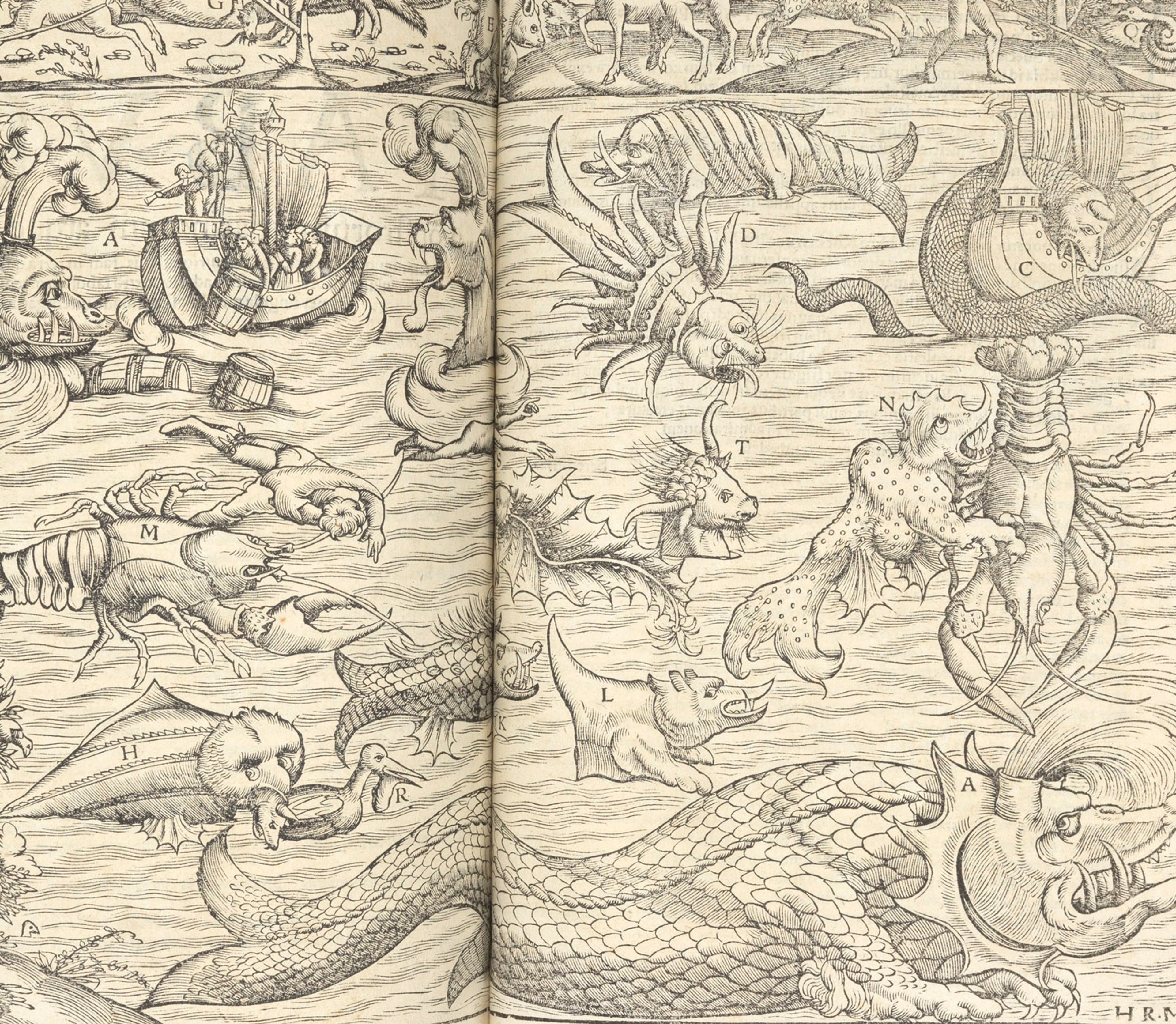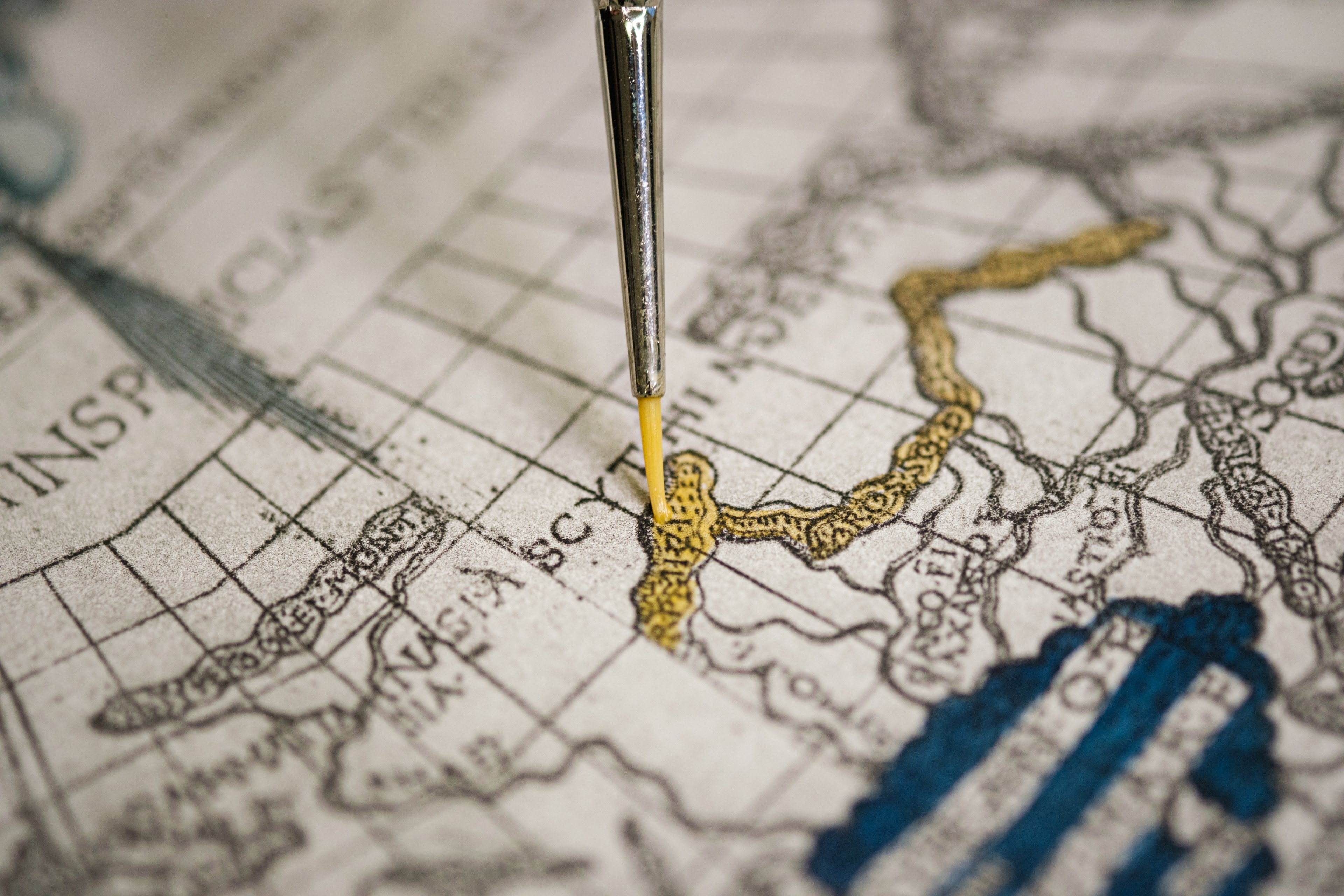The Sunderland Collection Original Print: Münster's Monsters
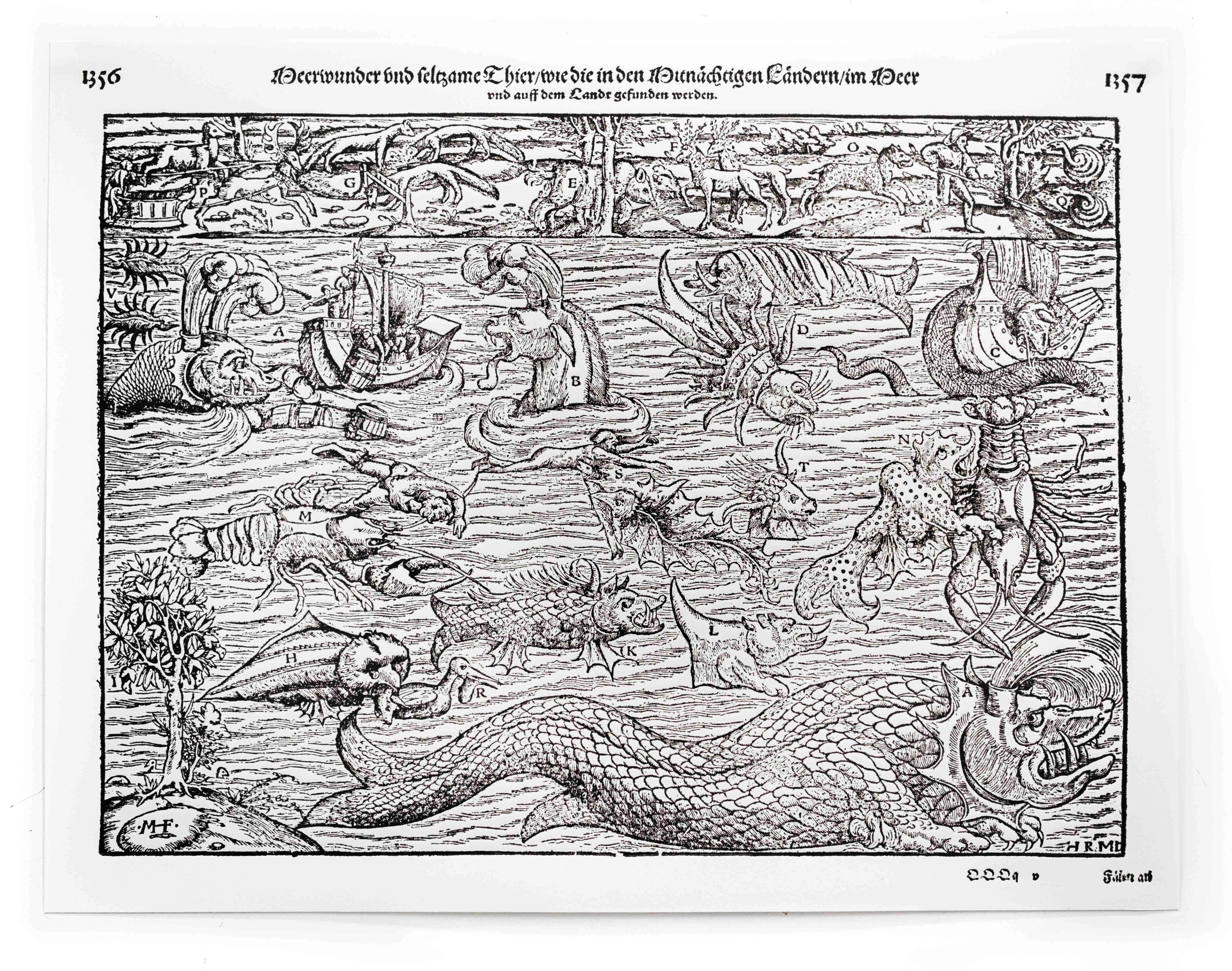
The Sunderland Collection's second fine art print is inspired by the iconic image of monsters of the land and sea by Sebastian Münster.
This plate features in Münster's most famous work, the 'Cosmographia Universalis', of which The Sunderland Collection holds an example dating to 1559. The atlas features many important early maps and over 1,000 woodcut incredible illustrations by some of 16th century Europe's finest artists and engravers, including Hans Holbein the Younger, Urs Graf, David Kandel, and Hans Rudolph Manuel Deutsch! You can find out more about the 'Cosmographia' here.
In this iconic image entitled 'Mostri Marini et Terrestri...' (Monsters of the Sea and Land...), Munster presents a menagerie of gruesome serpents with sharp teeth, giant crustaceans pincer-ing poor sailors, and some more familiar aquatic and land animals such as bears, reindeers, lobsters, and snakes.
We are proud to continue our partnership with Plaintiff Press for this print, using high-definition digital imagery and traditional printing techniques.
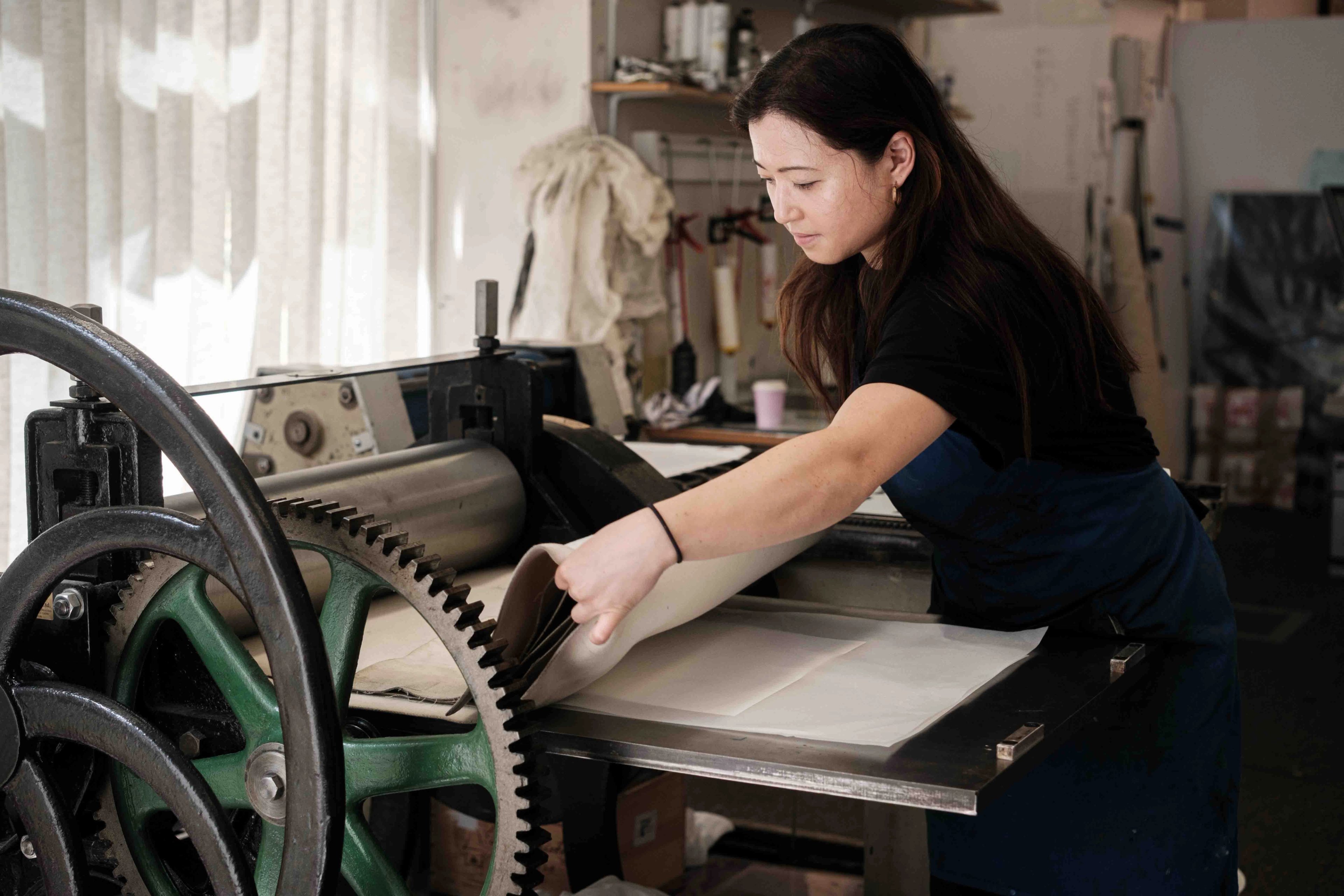
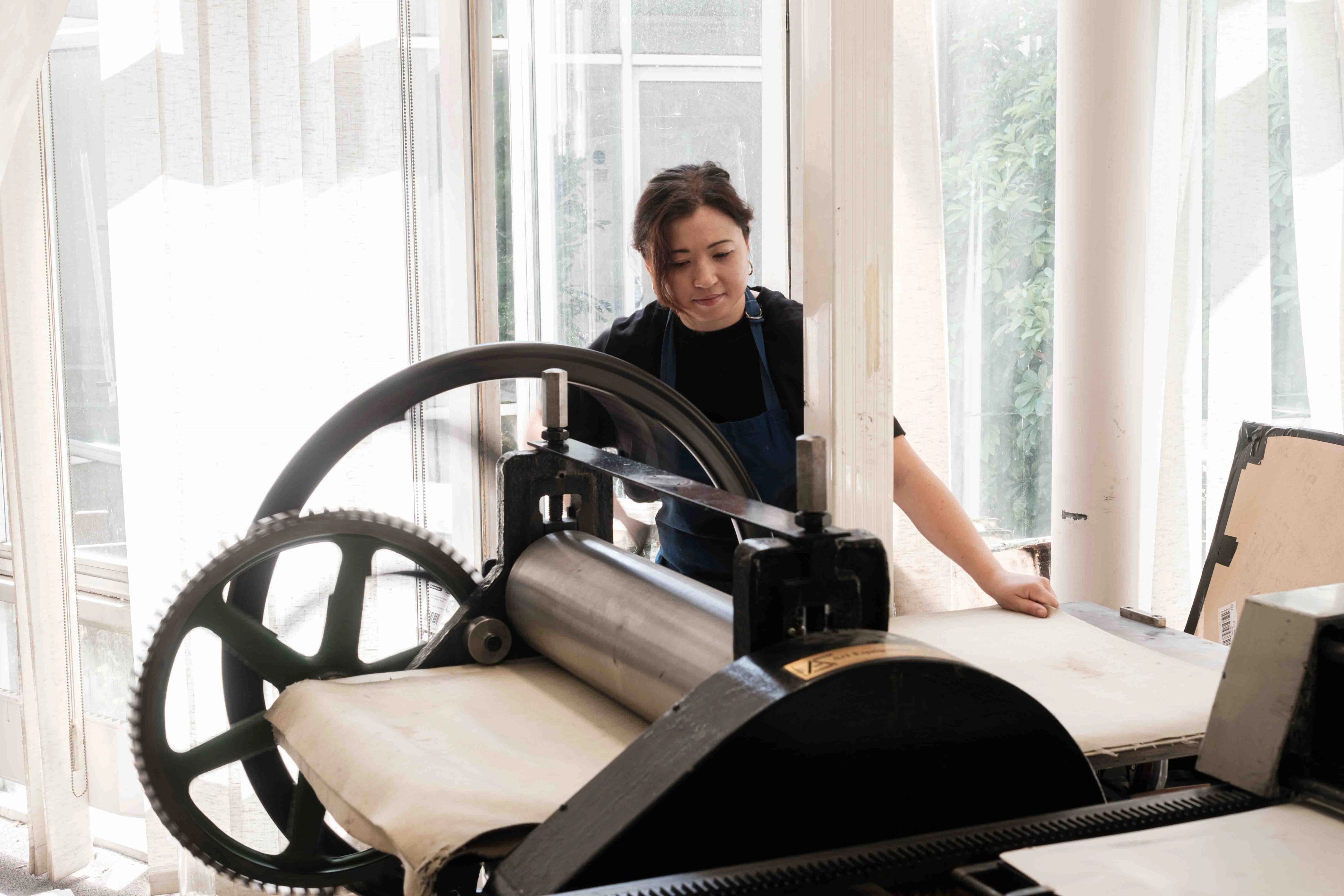
Like all of the original plates in Munster's Cosmographia, this image was made using the wood-cut engraving method, one of the earliest forms of printmaking.
This is a relief printmaking process: an image was carved into a piece of wood, ink was then be rolled on top, and the image was applied to paper from the pressure of passing through a printing press.
Modern technology has allowed Munster's original image to be digitally scanned and then transposed - or 'carved' - onto the surface of a polymer printing plate. The plate is then hand-inked individually, and run by hand through a vintage printing press. This means that every edition of this beautiful print is unique.
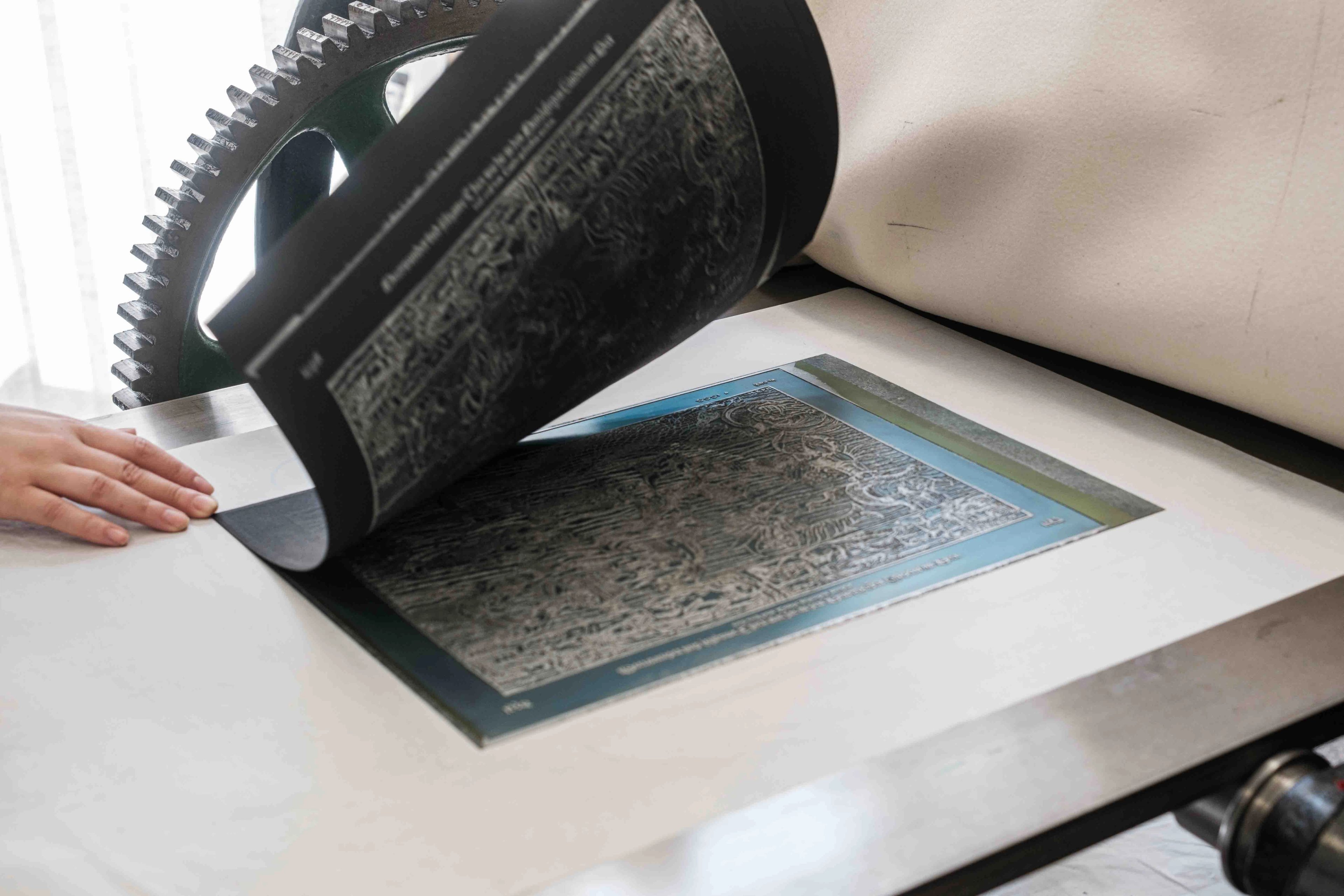
In homage to the contents of the image and Munster's heritage, this print has been created using a traditional woodblock process, and with its country of origin and materiality in mind.
The black and white fine art edition of Münster's Monsters is printed on beautifully smooth, archival 160gsm paper from the legendary Zerkall Paper Mill in Germany.
Famed for its fine mould-made paper, the mill served printmakers from 1887 - through world wars and a global pandemic - until sadly in July 2021, it experienced severe flooding. This tragic event is strangely fitting for an image of terrifying sea monsters. Zerkall paper is highly sought-after for its quality, and now increasingly difficult to find.
The second version of Munster's Monsters uses silver ink on BFK Rives Noir ("Black Shores") 300gsm paper, which has been sourced from the Arches Paper Mill in France. Established in 1492, this ancient mill provided the paper for the Nuremberg Chronicle!

Münster's Monsters
Edition of 200
Black ink on archival Zerkall 160gsm paper. 36.5 x 29 cm.
£ 80 (not including tax or duty)
Available for purchase here.
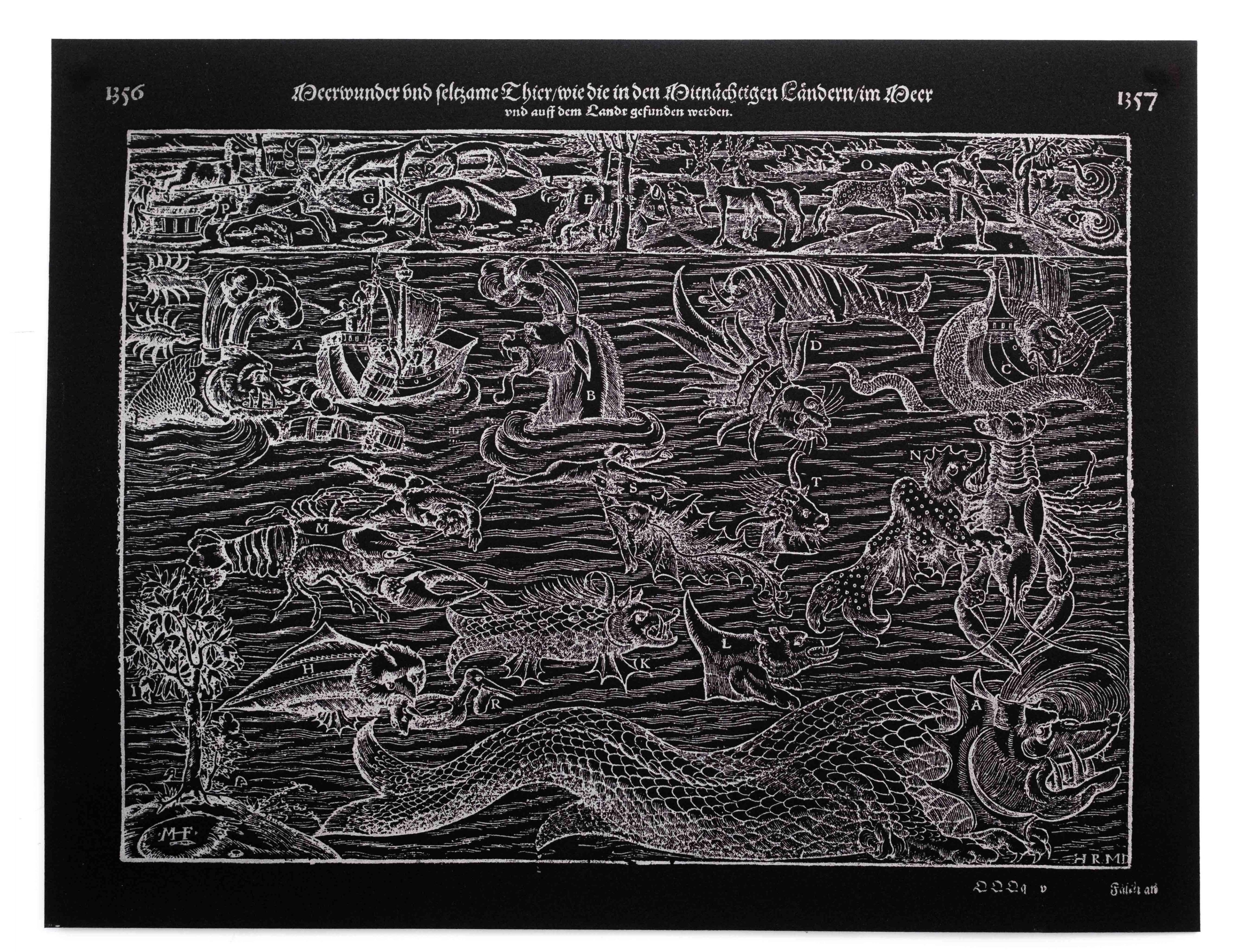
Münster's Monsters
Edition of 200
Silver ink on BFK Rives Noir ("Black Shores") 300 gsm paper. 36.5 x 29 cm.
£ 80 (not including tax or duty)
Available for purchase here.
In keeping with its watery theme, the ink used on this print was selected because of its ability to hold watercolour. Metallic pencil also works particularly well on the dark edition.
Colour played an active role in making maps more visually accessible. Natural dyes and pigments were used to colour the different features on European maps from around the 16th century. Publishers often offered their patrons the choice of purchasing monochrome or coloured versions of maps and atlases.
Get inspiration for colouring your sea monsters from Münster's 'Geographia' (1540) - or create your own colourway and layer up the pigments!
Images © Haych Digital / The Sunderland Collection
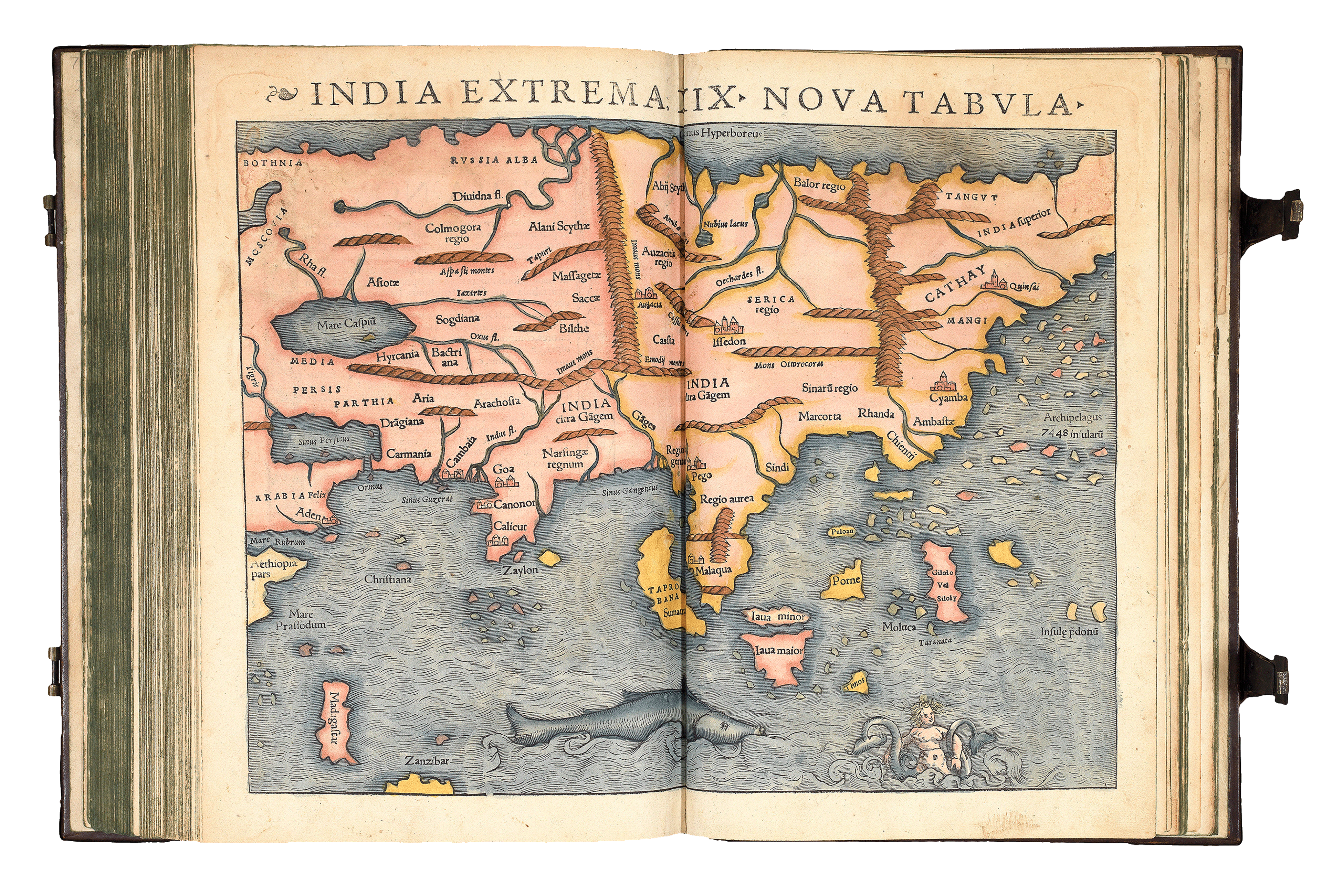
Map of Asia
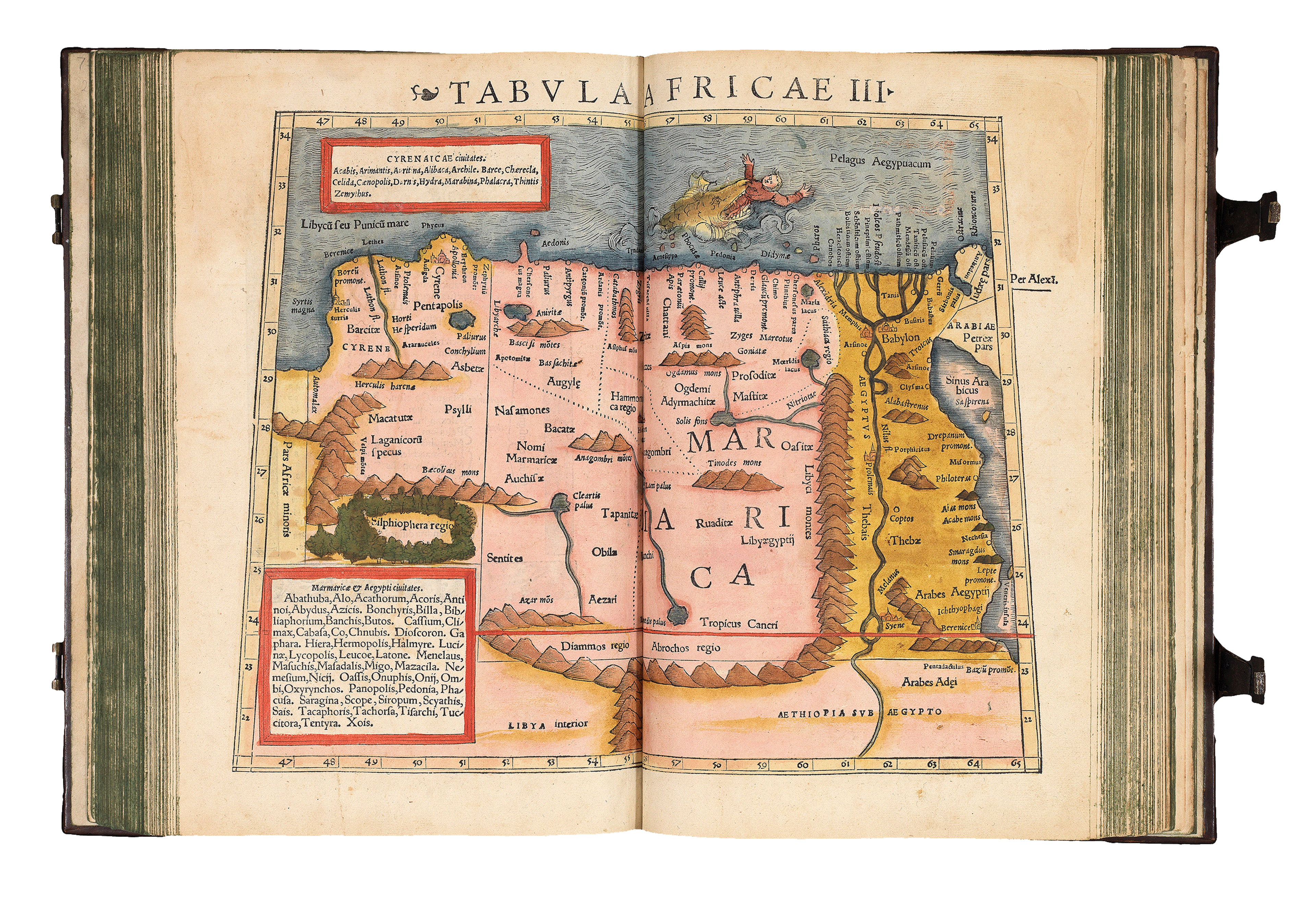
Map of Northern Africa and Egypt
To celebrate the second anniversary of Oculi Mundi's official launch, we are delighted to also present a series of little monsters: an open edition and limited editions in three luxurious variations!

Mini Monster
Open Edition
A relief print, black ink on white Fabriano Unica 280 gsm paper
12 x 12 cm
£30 each (not including tax or duty)
Available for purchase here.

Mini Monster Special Editions
Limited Editions of 50 each
B. Relief print on silver, chine colle gold and silver leaf on pearlescent blue paper 290 gsm.
C. Circular Relief print on Somerset Satin White 300 gsm, inked in pearlescent blue colour way.
K. Relief print on Somerset Satin White 300 gsm, inked in ombre indigo colour way.
12 x 12 cm
£30 each or £80 for a set (not including tax or duty)
Available for purchase here.
Sign up to receive all the latest updates from The Sunderland Collection:






